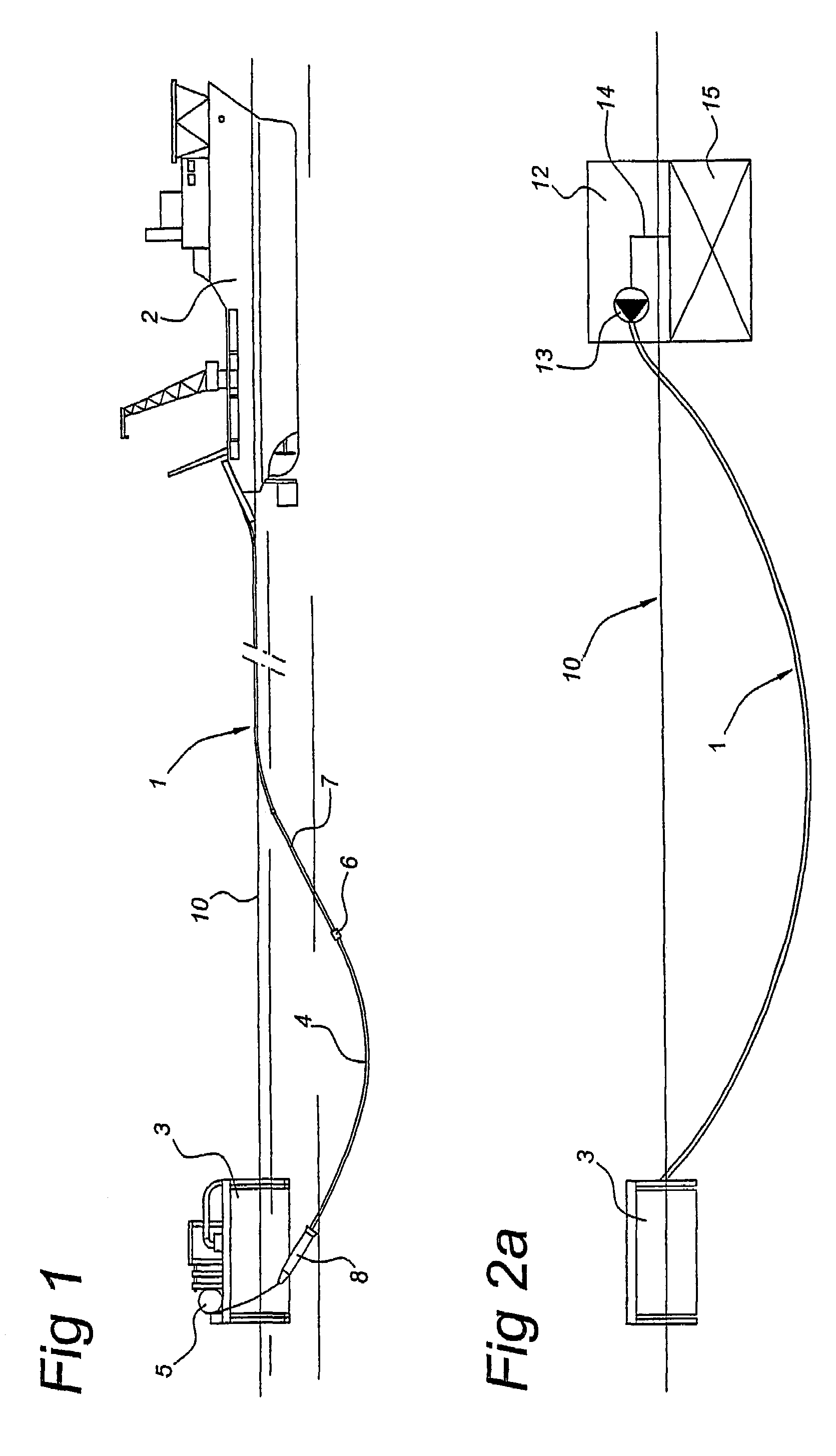Method of supplying oil from a floating production structure to an offloading buoy via a thermally insulated flexible transfer duct
a transfer duct and floating production structure technology, applied in the direction of passenger handling apparatus, special purpose vessels, borehole/well accessories, etc., can solve the problems of increasing the viscosity of hydrocarbons, reducing flow capacity, and steel pipes subject to metal fatigue, so as to reduce the heat loss through the duct, the effect of constant viscosity and reduced heat loss
- Summary
- Abstract
- Description
- Claims
- Application Information
AI Technical Summary
Benefits of technology
Problems solved by technology
Method used
Image
Examples
Embodiment Construction
[0020]FIG. 1 shows a flexible mid depth transfer hose 1, which is deployed from a dynamically positioned supply vessel 2. The transfer hose 1 is connected to a CALM offloading buoy 3 via a pull-in wire 4, connected to a winch 5 on the buoy. By winding up the pull in wire 4 on the winch, a connector head 6 on flooded hose section 7 can be pulled in and locked in connector 8 at the bottom of the buoy 3. The flexible hose 1 has a length of between 1500 m and 3000 m and extends at a depth of between 50 m and 500 m below water level 10. The end of the hose 1 at the side of the supply vessel 2 is connected to a floating structure 12, such as an FPSO, a TLD (Tension Leg Deck), SPAR or Semi-submersible such as shown if FIGS. 2a-2d. On the floating structure 12, the hose 1 is connected to a pump unit 13, which is connected with an inlet duct 14 to a tank 15 or other oil supply source.
[0021]FIG. 2a shows a simple catenary configuration of the flexible hose 1, FIG. 2b a wave configuration, FIG...
PUM
 Login to View More
Login to View More Abstract
Description
Claims
Application Information
 Login to View More
Login to View More - R&D
- Intellectual Property
- Life Sciences
- Materials
- Tech Scout
- Unparalleled Data Quality
- Higher Quality Content
- 60% Fewer Hallucinations
Browse by: Latest US Patents, China's latest patents, Technical Efficacy Thesaurus, Application Domain, Technology Topic, Popular Technical Reports.
© 2025 PatSnap. All rights reserved.Legal|Privacy policy|Modern Slavery Act Transparency Statement|Sitemap|About US| Contact US: help@patsnap.com



